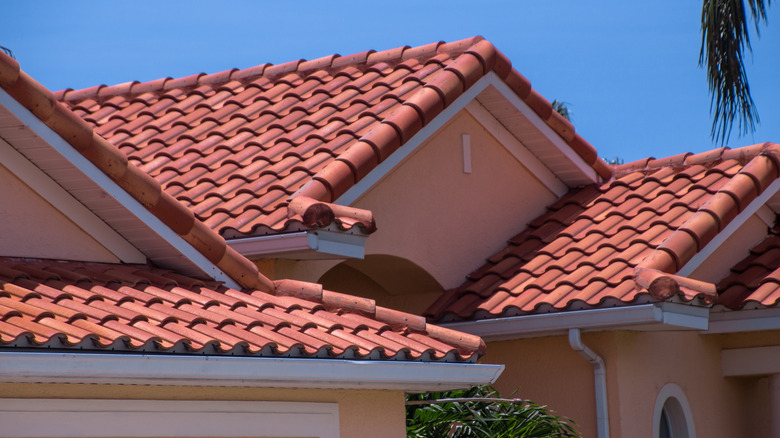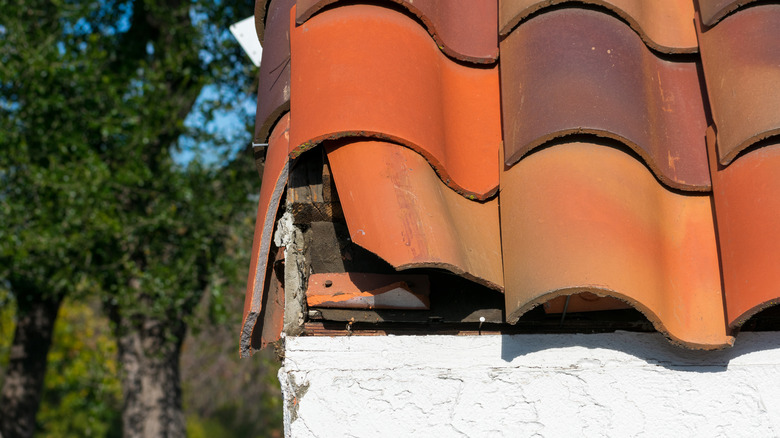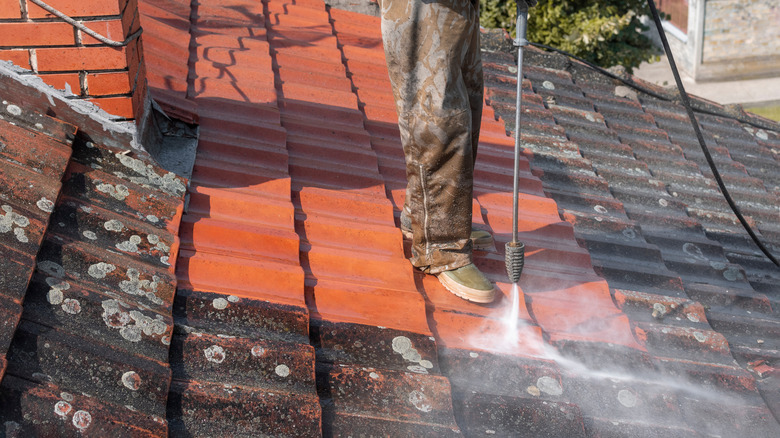What You Should Know Before Installing Terra Cotta Shingles
Since ancient times, cultures worldwide have used terra cotta to adorn their homes, construct pots, and even create art. However, in the modern era, this material has seen a bit of a downturn in popularity, via ellementry. As brick, concrete, steel, and wood became the go-to materials for construction, terra cotta was sidelined and now only really appears in a decorative capacity. Now that trends are moving towards natural materials, warm colors, and organic shapes, you may wonder if a terra cotta roof is a suitable choice for your home.
Terra cotta shingles are still a relatively popular material for roofing because of their distinctive look and color, especially in Mediterranean-style designs, but they're also a major investment. Before you decide to switch up the look of your home, it's important to learn more about the pros and cons of this material and whether or not it will last in the long run.
The cons of terra cotta
Terra cotta is clay fired in a kiln. It's a straightforward process that, in ancient times, was a feat of innovation that allowed for stronger, more durable building materials. However, when you compare its durability to something like asphalt shingles, terra cotta is nowhere near as resistant to cracks and damage. On the same note, terra cotta isn't waterproof unless treated, so unless you're living somewhere like southern California or the Southwest, which doesn't get a lot of rain, it's not the best option for resisting water damage.
Installing a terra cotta roof is also much more expensive in the United States because it's not as commonly used as other materials. According to LawnStarter, you can expect to pay between $10 and $23 per square foot for labor and materials, not including the cost of removing the previous roof and adding any additional support because of the weight of the tile.
The pros of terra cotta
The main draw of a terra cotta roof is stylistic, but some other unexpected benefits also come with this material. According to Energy Saving Trust, about a quarter of heat that seeps out of a home is lost through the roof; because it's so thick, terra cotta is an excellent insulator that can help lower your electricity bill throughout the year. It's also reasonably simple to maintain, so long as you don't find yourself with any damage, and it just needs a yearly spray with a pressure washer to remove any dirt and debris.
If you're looking for a more environmentally-conscious alternative to something like asphalt shingles, terra cotta is also a great option. It's made of one of the most plentiful, renewable materials on the planet — clay — and can be produced in energy-efficient kilns to reduce negative environmental impact. However, that all depends on the manufacturer. All in all, it's a good choice if you're in a sunny, dry area and willing to spend some extra money on a unique style of roofing.


